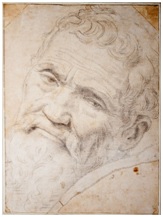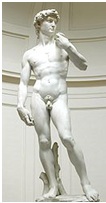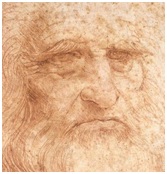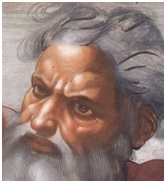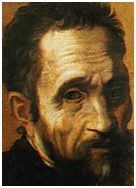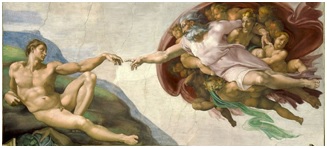|
 |
|
 |
Michelangelo - Creativity and Art
Michelangelo (1475-1564)
Italian painter, sculptor, architect and poet Rival of Leonardo da Vinci.
His most famous works of art are...
Why was he so creative? 1. Inspiration Michelangelo was:
He particularly emphasized male beauty (as illustrated by David, pictured right, showing the biblical king David just before his battle with Goliath). Art was always much more important to him than money.
2. Spirituality Michelangelo:
His motto was “They raise our intellect to heaven” (referring to painting, sculpture and architecture).
3. Learning He learned from his:
a) great rival Leonardo da Vinci (pictured right) (particularly his ability to draw figures in triangles, a technique Michelangelo used in his painting of the Sistine Chapel ceiling).
b) continual quest for perfection and improvement (helped by his incredible memory for works of art). “I am still learning”, he always said.
4. Determination and hard work On the road to success, he showed
a) perseverance He constantly battled against depression and criticism. His naked figures on the Sistine Chapel ceiling, were heavily criticized as obscene by some people in the Catholic Church. After his death the naughty bits were covered up! b) stamina His great works took several years of exhausting work with long hours and little sleep. The Sistine Chapel ceiling was particularly arduous, giving him neck and back trouble for the rest of his life. He stood on scaffolding to paint it, not laying down as is sometimes believed. Pictured right is the face of God on the ceiling.
c) focus He had no friends and totally dedicated himself to the ceiling’s completion, suffering eye and throat damage from drippings of wet plaster onto his face.
“I toil harder than any man, whoever was, unwell and with enormous effort; and yet I have the patience to reach the desired end”, he said in 1512. 5. Revolutionary Michelangelo (pictured right aged 60) broke with convention and painted directly onto the Sistine Chapel ceiling with sweeping brush strokes rather than copying from a full-sized drawing. This is tricky because the plaster had to be damp so that the paint did not sink into it. Creativity for him meant:
a) challenging conventional wisdom and people in authority (even the Pope) “Criticize by creating”, he said.
b) originality He attacked copiers of other people’s work, saying “He who walks in the footsteps of another is not likely to walk before him”.
6. Talent and self-motivation He was a great artist because of his a) incredible skill and speed. He drew Adam’s penis in the Sistine Chapel with a single brush stroke! The creation of Adam on the ceiling is pictured right.
b) sense of humour One of the angels in the Sistine Chapel is making a rude gesture!
c) will to win He was obsessed with pushing himself to be great.
“The greater danger for most of us lies not in setting our aim too high and falling short; but in setting our aim too low, and achieving our mark”. he said.
7. Positive thinking However difficult his work, he was optimistic about finishing it successfully.
8. Patronage Seven Popes commissioned his work, but his greatest patron was Julius II (Pope from 1503 to 1513).
Key quote on objectives The greatest danger for most of us lies not in setting our aim too high and falling short; but in setting our aim too low and achieving our mark.
Key quotes on success If people knew how hard I had to work to gain my mastery, it would not seem so wonderful at all Faith in oneself is the best and safest course. Genius is eternal patience.
Key quote on creativity Criticize by creating
Key quote on time management There is no greater harm than that of time wasted. |
|
|
||
|
|
|
||
|
||
| Copyright © wisdomtowin.com All Rights Reserved | ||
|

